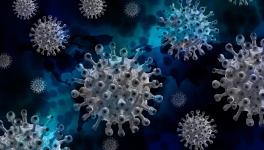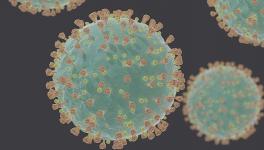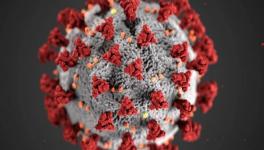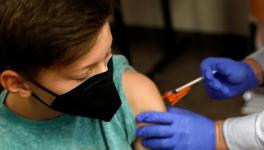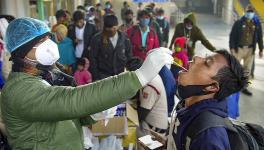Omicron Super Spread: High Viral Load May Not be the Answer
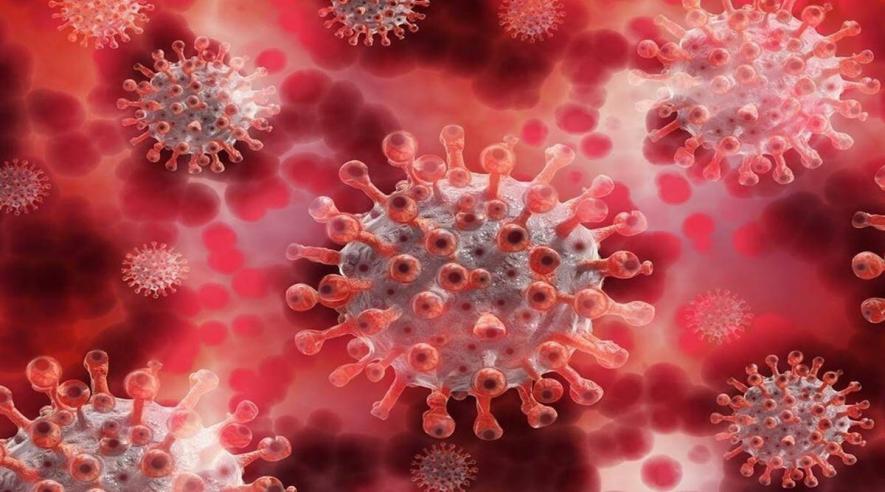
Image Courtesy: The Financial Express
Viral load is the amount of virus in an infected person. With Omicron spreading at an extraordinary speed across the world, could it be thought that the variant produces more viral load in the infected patients? Earlier research with the Delta variant, which was once super spreading, although at a lesser speed than Omicron, showed that the more viral loads of the Delta made it easier to spread.
To test if the same is happening with Omicron, researchers tried to find the viral loads of Omicron. Two studies that can be taken as preliminary results say otherwise.
Both the studies found that Omicron’s viral loads are similar or even lesser than its main competitor, the Delta. These initial findings say that Omicron’s super spreading quality is not quite well related to the production of many viral particles inside an affected patient; it may be something else. The viral load can be measured with the help of the PCR (Polymerase Chain Reaction) test, which brings out a quantitative measure of the viral RNA (Ribonucleic Acid) in the body. The novel coronavirus—SARS-CoV-2 has RNA as its genetic material.
In one of the two initial studies, infectious disease specialist Yonatan Grad, at the Harvard T.H. Chan School of Public Health, Boston, USA, and his co-researchers looked at data from the National Basketball Association (NBA). The NBA is North America’s basketball organisation that conducts frequent COVID-19 testing among the players and personnel.
The researchers analysed the results obtained from the PCR tests of the nasal and throat swabs collected from infected persons. They found that the patients infected by the Delta variant had a slightly higher viral load at the peak of the infection compared to the Omicron. Grad, commenting on the findings, said, “I was not really expecting this result. After all, in only two months, Omicron replaced Delta as the dominant cause of US COVID-19 cases.”
The other study, led by Benjamin Meyer of the University of Geneva, Switzerland, went a step further. The researchers measured the viral RNA present in the swab samples collected from infected people and counted the number of infectious viral particles.
The measure of the infectious viral particles was conducted on a separate group of infected people of 150. Interestingly, their analysis revealed no significant difference in viral loads among vaccinated people infected by Omicron and Delta. Meyer took inspiration from the findings of the Grad's team. He said, “Naturally, you’d think that higher transmissibility must cause a higher viral load.”
The findings of Meyer’s team may have some implications for government policies as well. Meyer’s team analysed samples collected from vaccinated people infected with Delta. Their findings are very significant. They found that around half of their samples contained infectious viruses even though they tested positive five days ago.
Similarly, Grad and his colleagues found that after five days of someone testing positive with Omicron, half of them contained viral loads that are high enough to remain infectious.
On the lack of heavy viral loads for a super spreading variant like Omicron, Emile Bruce, a virologist at the University of Vermont, USA, believes that the answer may lie in the capability of the coronavirus to evade immunity caused by vaccination or earlier infections.
However, there is a need for more such findings to pinpoint where exactly Omicron's ability to super spread lies. However, results from both Grad's and Meyer’s teams may be concerning as far as policy undertaken by several countries are concerned.
In many countries like the USA and India, people infected with Omicron can end their isolation after five days from testing positive or after the first symptoms were detected. The studies suggest that five-day isolation may not be enough for every case of infection by the Omicron variant.
Get the latest reports & analysis with people's perspective on Protests, movements & deep analytical videos, discussions of the current affairs in your Telegram app. Subscribe to NewsClick's Telegram channel & get Real-Time updates on stories, as they get published on our website.









